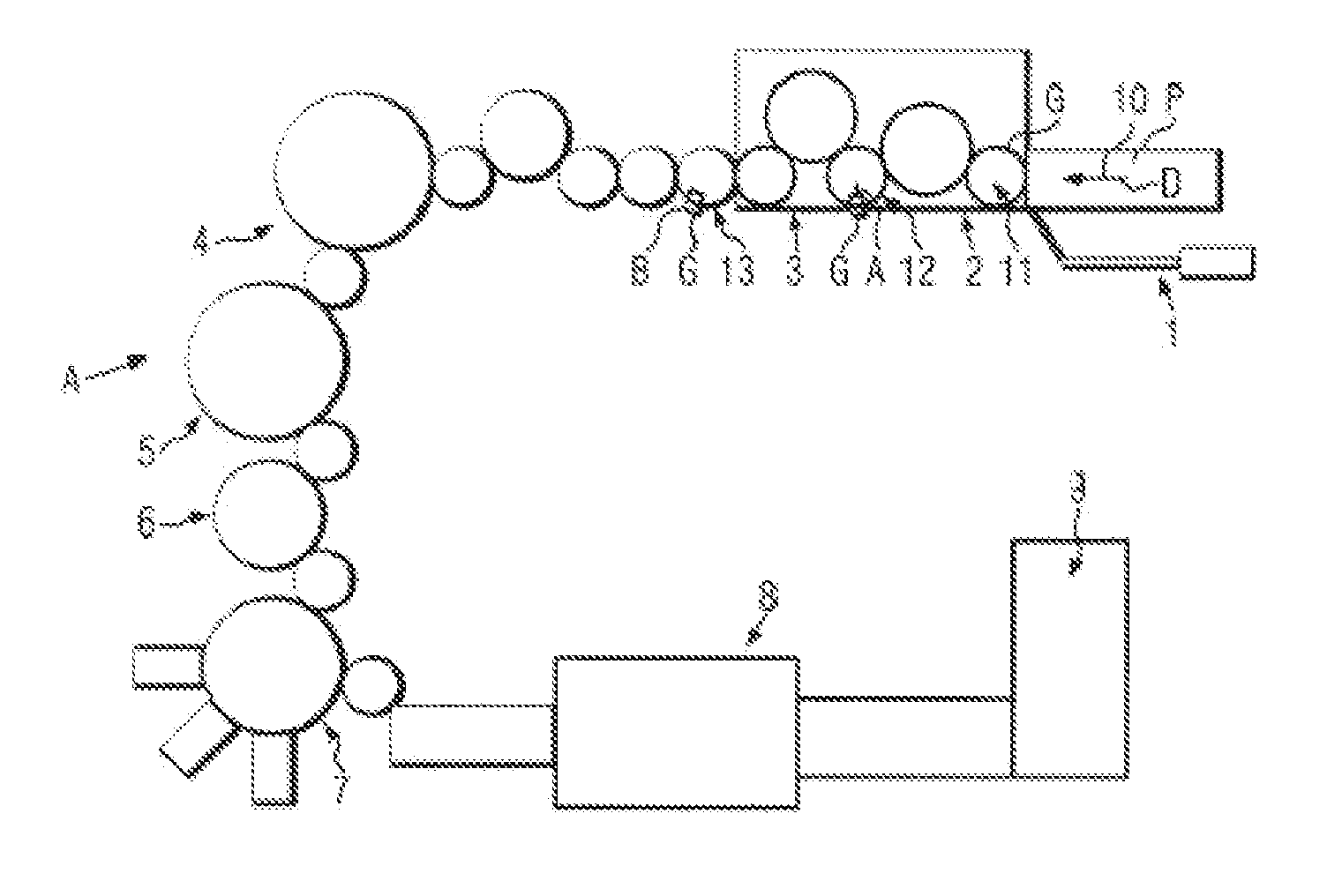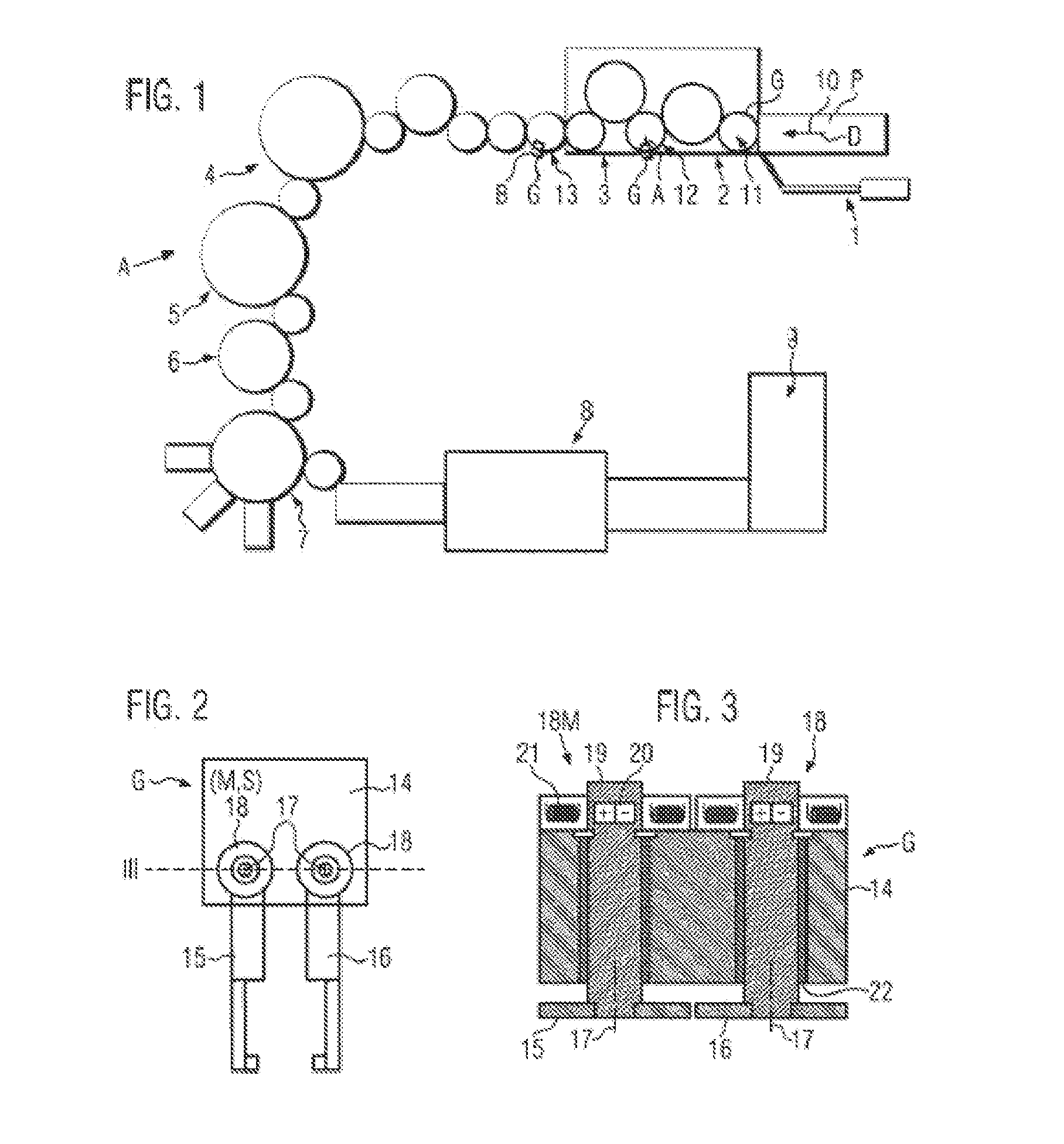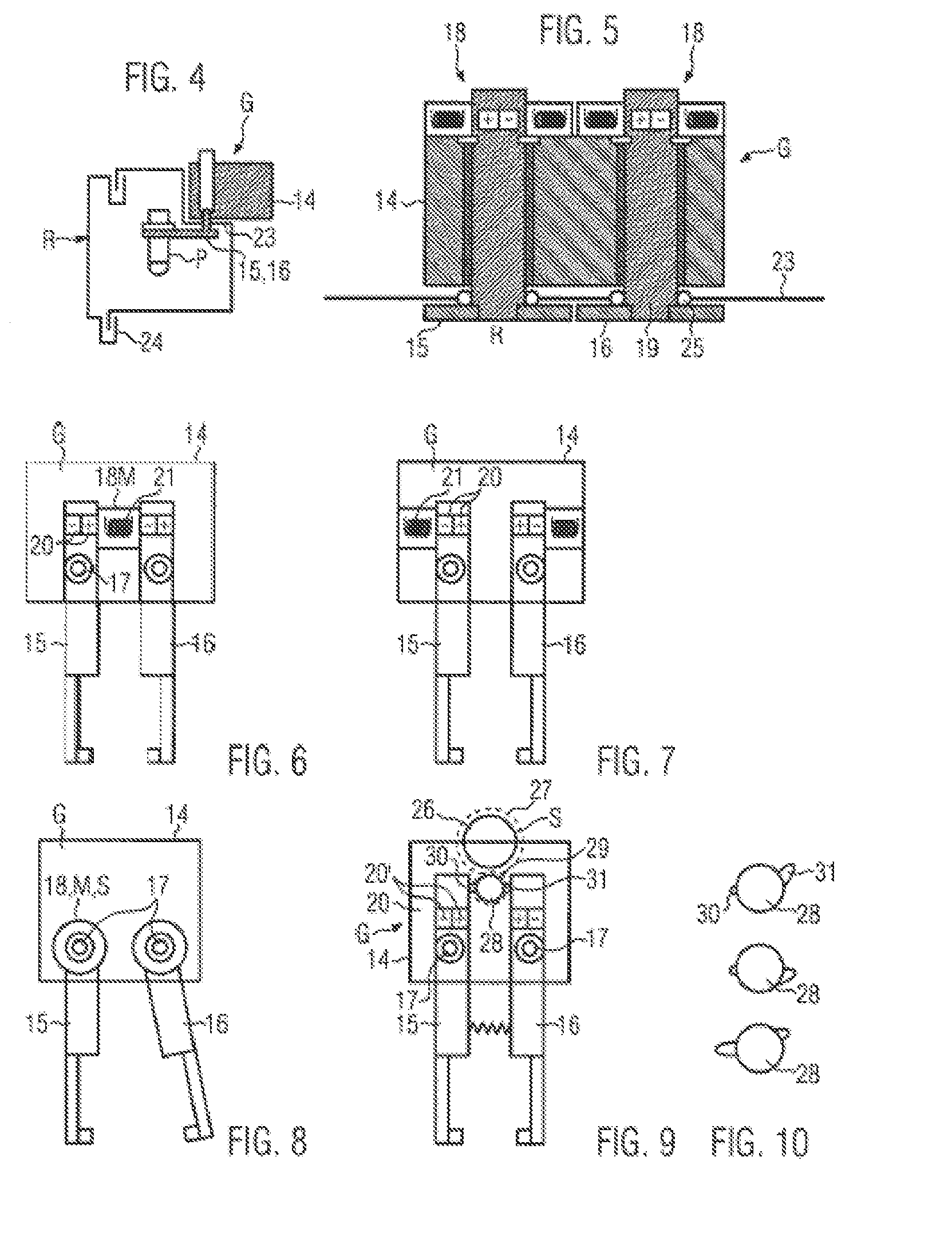Container treatment machine and method of treating containers
a container and treatment machine technology, applied in the direction of charge manipulation, furnaces, cleaning using liquids, etc., can solve the problems of high closing force of the gripper, and often occurring oscillating motion of the preform, so as to reduce the change-over time, prevent damage, and be easily placed in a clean room
- Summary
- Abstract
- Description
- Claims
- Application Information
AI Technical Summary
Benefits of technology
Problems solved by technology
Method used
Image
Examples
Embodiment Construction
[0079]A container treatment plant A represented in FIG. 1 as a non-restricting example comprises a transport section 10 for preforms P as a part of a heating module 1 in which the preforms P are transported, for example, at holding arbors D or internal grippers to a further transport section 11 defined by a transfer starwheel, for example in an intermediate module 2 in which (optionally) the preforms P are subjected to a preferential heating process (see FIGS. 29, 30). In the process, they are contacted with temperature-control contact elements acting as gripper claws to apply a temperature profile varying e.g. in the circumferential direction. This is followed by a blow module as a further container treatment machine 3 in which a transfer starwheel 12 transfers the temperature-controlled preforms into split blow molds with transfer arms A and grippers G under pitch distortion compensation. The blow-molded or stretch-blow molded containers B are then transported via transfer starwhe...
PUM
| Property | Measurement | Unit |
|---|---|---|
| length | aaaaa | aaaaa |
| length | aaaaa | aaaaa |
| swivel angles | aaaaa | aaaaa |
Abstract
Description
Claims
Application Information
 Login to View More
Login to View More - R&D
- Intellectual Property
- Life Sciences
- Materials
- Tech Scout
- Unparalleled Data Quality
- Higher Quality Content
- 60% Fewer Hallucinations
Browse by: Latest US Patents, China's latest patents, Technical Efficacy Thesaurus, Application Domain, Technology Topic, Popular Technical Reports.
© 2025 PatSnap. All rights reserved.Legal|Privacy policy|Modern Slavery Act Transparency Statement|Sitemap|About US| Contact US: help@patsnap.com



